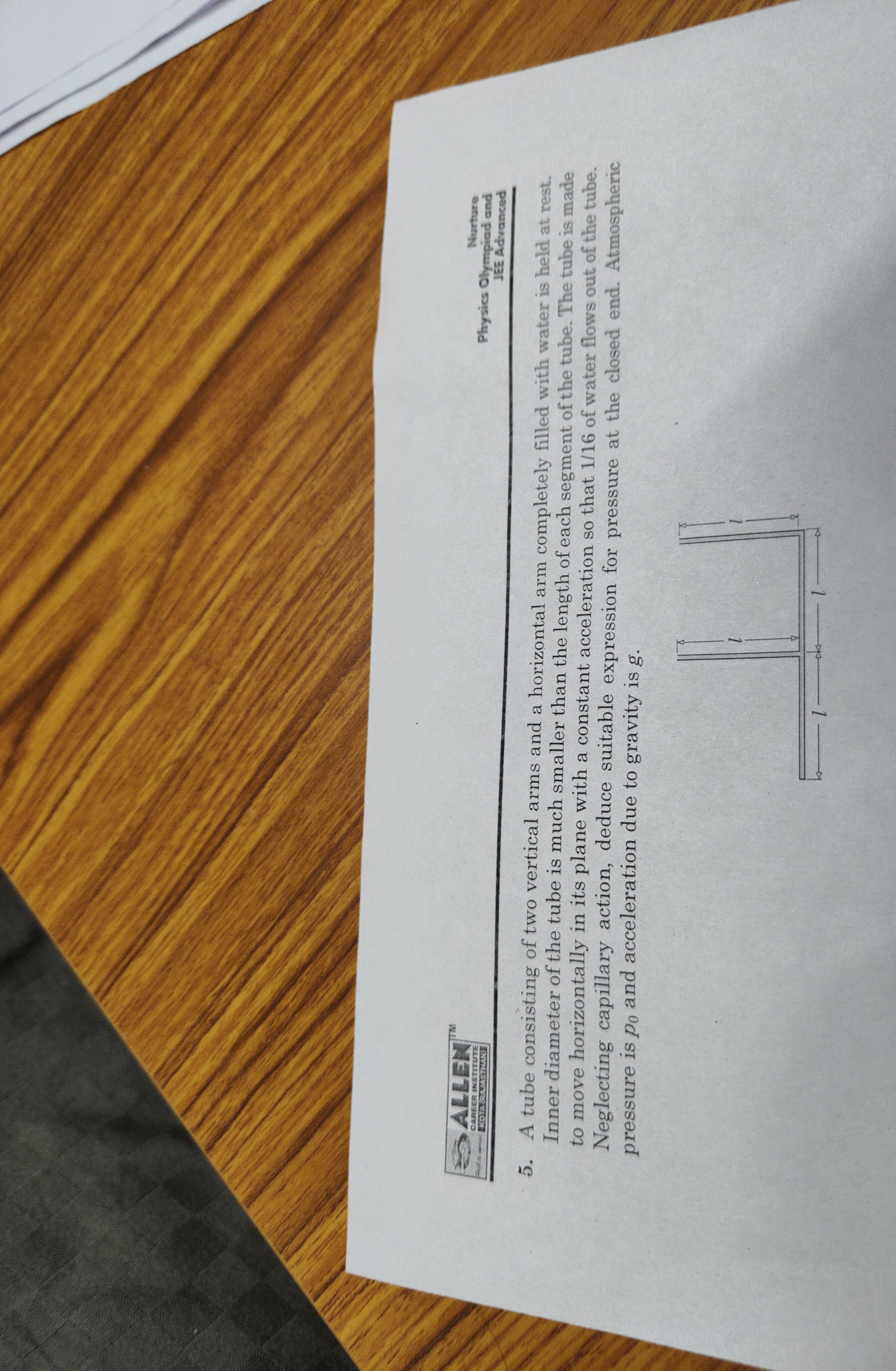Question
Question: A tube consisting of two vertical arms and a horizontal arm completely filled with water is held at ...
A tube consisting of two vertical arms and a horizontal arm completely filled with water is held at rest. Inner diameter of the tube is much smaller than the length of each segment of the tube. The tube is made to move horizontally in its plane with a constant acceleration so that 1/16 of water flows out of the tube. Neglecting capillary action, deduce suitable expression for pressure at the closed end. Atmospheric pressure is p0 and acceleration due to gravity is g.

p0+3229ρgl−21ρal
Solution
Let the acceleration be a in the x-direction and gravity g in the -y direction. The effective gravitational acceleration in the frame of the tube is geff=g−aapparent. If the tube accelerates with a, the apparent acceleration is −a. Thus, geff=−ai^−gj^.
The pressure gradient is ∇P=ρgeff, so ∂x∂P=−ρa and ∂y∂P=−ρg. Integrating, we get P(x,y)=−ρax−ρgy+C.
Let the horizontal arm have length l (from x=0 to x=l) and the vertical arms have length l (from y=0 to y=l). The water surfaces in the vertical arms are at atmospheric pressure p0. Let the heights of water in the left and right vertical arms be hL and hR respectively. P(0,hL)=p0 and P(l,hR)=p0. Using the pressure relation between (0,hL) and (l,hR): P(0,hL)=P(l,hR)−ρa(0−l)−ρg(hL−hR) p0=p0+ρal−ρg(hL−hR)⟹hL−hR=gal.
Initially, the volume is Vinit=A(l+l+l)=3Al. After 161 flows out, Vfinal=1615Vinit=1645Al. The final volume is also Vfinal=AhL+Al+AhR. hL+hR=(1645−1)l=1629l.
Solving the system: hL−hR=gal hL+hR=1629l Adding them: 2hL=(1629+ga)l⟹hL=2l(1629+ga). Subtracting them: 2hR=(1629−ga)l⟹hR=2l(1629−ga).
The pressure at the closed end (bottom of the horizontal arm, at (l,0)) is P(l,0). P(l,0)=P(l,hR)−ρg(0−hR)=p0+ρghR. Substituting hR: P(l,0)=p0+ρg(2l(1629−ga))=p0+3229ρgl−21ρal.
